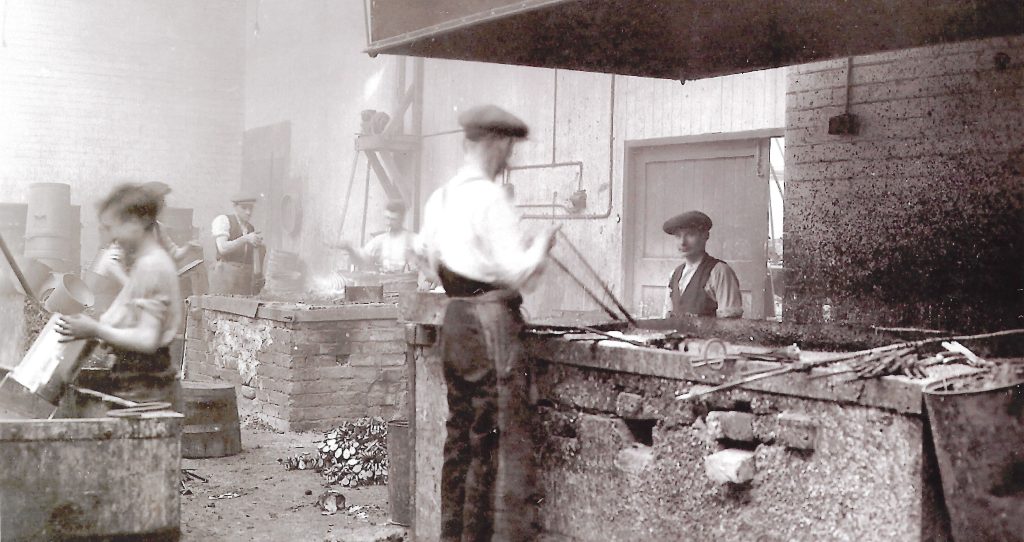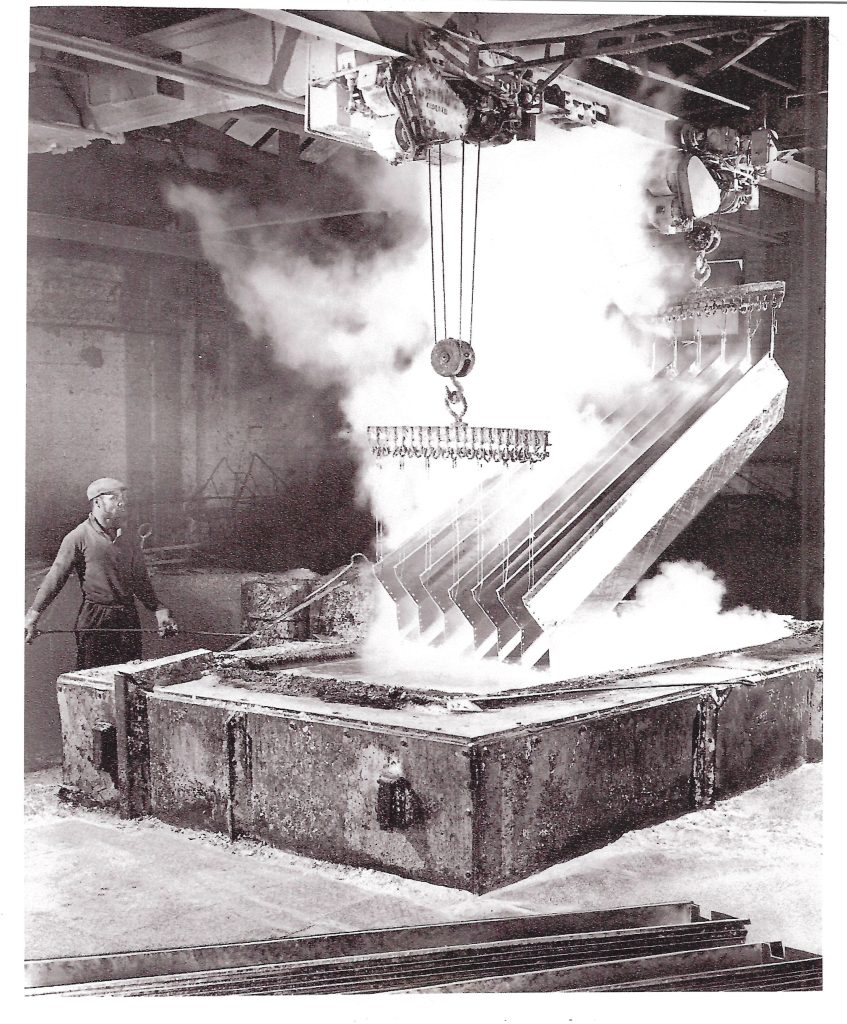The history of metal treatment
The history of metal spans many centuries: from the creation of bronze back in 3300 BC, to the development of steel protection services such as galvanizing, through to modernised developments such as automation and sustainable practices.
Follow us as we deep-dive into the history of metal and steel protection services, including hot dip galvanizing, spin galvanizing, powder coating, and more.

The Bronze Age – the beginning of metal alteration
Metal treatment practices can be traced back to ancient civilisations, where early humans discovered heat’s effect on steel. One notable example is the Bronze Age (around 3300 to 1200BC), when copper and tin were first combined to create bronze. This marked a significant advancement, resulting in a stronger material that could be used for weapons, tools, and other objects.
The Iron Age – the development of blacksmithing
Blacksmithing was developed and refined in the Iron Age, which was around 1200 to 500BC.
The Iron Age marked a significant shift towards using iron as the primary metal for toolmaking. Iron, being abundant and widely available, offered several advantages over bronze, including increased strength and hardness.
Medieval and Renaissance periods – blacksmithing became widespread
Blacksmithing became more prominent during the medieval period. Heat treatment techniques such as forging, quenching, and tempering were crucial for producing weapons and armour, which were highly sought after during the Middle Ages. Many villages now had their own blacksmith as demand increased.
The Renaissance period brought further advancements for the metal industry. Alloys such as brass were being more utilised, and the growth of metallurgical knowledge paved the way for more steel fabrication techniques.
Industrial Revolution – a monumental period for steel protection
The Industrial Revolution in the 18th and 19th centuries was a busy time period for metal treatment services, becoming more automated to keep up with demand. Innovations like the Bessemer process transformed the industry, enabling the mass production of steel. Other metal treatment techniques such as galvanizing were invented around this time too.
Heat treatment techniques such as annealing, hardening, and tempering became more refined. These techniques involved subjecting the metals to controlled temperature changes, resulting in improved strength and flexibility. By carefully manipulating the heating and cooling cycles, metallurgists could change the properties of the metal to suit their requirements.

The history of shot blasting and sand blasting also dates back to the 19th century. The process was developed to remove rust, scale, and other contaminants from metal objects. Benjamin Chew Tilghman invented the sand blasting (air blast) process in 1869 and filed a patent in the USA. Blasting services used hand-operated equipment to manually propel abrasive materials like sand or grit onto the metal’s surface. This method had limited efficiency and effectiveness, and was very labour-intensive.
The mid-1800’s were undoubtably a core time for the steel industry. Joseph Ash Galvanizing was also established during this time, in 1857.
20th century – the rise of powder coating
Powder coating, a steel coating method used for corrosion-protection and colour, was established in the 1940’s. While not well-utilised initially, it became more popular when technology improved during the 1980’s and 1990’s. Powder coating became widely adopted in various industries for its durability, attractive finish, and environmental benefits.

Shot blasting and sand blasting also had an overhaul some 100 years after their establishment. The use of compressed air for shot blasting in the early 20th century revolutionized the process. Air-blasting machines propelled abrasive substances with compressed air, making the process quicker and allowing for a more even surface cleaning. The 20th century saw a decline in sand blasting due to health and safety concerns, and shot blasting took over.
Spin galvanizing can also be traced back to the mid-20th century. It was created in response to the problems faced with trying to galvanize small pieces, where traditional methods like immersion were not practical or cost-effective.
Modern day – a focus on sustainability
There has been an increased focus on environmental friendliness in the 21st century. Companies are looking for ways to fabricate and protect their steel without damaging the environment.
Fortunately, galvanizing is a environmentally-friendly way of protecting steel from corrosion. The enhanced lifespan provided by galvanizing also means both the galvanized steel and the galvanizing process fit into a circular economy.
Modern galvanizing facilities have also adapted their plants to capture emissions and reuse any unused by-products from the process. Even in recent years, changes are being made to improve sustainability, such as the development of an environmentally-friendly passivation process – a huge step forward for the industry.
Joseph Ash Galvanizing, established 1857
Joseph Ash Galvanizing has been in the steel protection industry for over 160 years and our services remains tested and trusted by businesses just like yours. With nine UK sites, we’re never too far away to protect your steel.
- We’ll collect and deliver your steel to our site ✔️
- Comprehensive technical support, guidance and assistance at every stage ✔️
- Hot dip galvanized to BS EN ISO 1461 standards ✔️
- Quality and Environmental Management Systems specifications ✔️
- Part of a circular economy ✔️